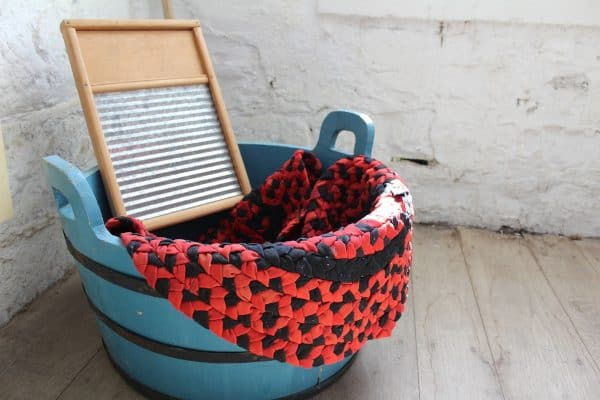You’ve just spent quite a bit and invested in a great new hammock, a lovely hammock stand that goes quite well with your indoor and outdoor decor, and have just spent the entire season lounging around in it. Chances are that your hammock has seen quite a few casualties in this time, from spilled coffee to muddy shoes, especially if you’re a household with wild-and-free-running tots and especially if your hammock was primarily used outdoors.

Sure, hammocks are meant to be durable and weatherproof, but that in no way implies that they’re also dirt proof or maintenance proof.
Putting your trusty hammock through a thorough deep cleaning a few times in the year will not only keep away any mold and mildew but also make your hammock’s fabric last longer. Mildew, especially, is a serious threat, causing respiratory problems if inhaled and painful rashes on your skin on contact. What makes it worse is that it’s also hard to spot, though discoloration, fabric staining, and algae are often indicators of mildew.
Therefore, a clean hammock is also much safer; the risk of infections or allergies from the accumulated dirt is minimized. This is especially important with kids around, as they may also bring their toys to play in the hammock; these toys could also get dirty and find their way - dirt, allergies and all - into your house, or worse, your tot’s mouth, long after they’ve left the hammock.
If your hammock has reached the stage where you’re finding remnants of last summer’s pizza nights, or better yet, a family of spiders calling it home, it’s time to give that hammock a wash - here’s all you need to know on how to wash a hammock!
Table of Contents
Hammock Washing Instructions
Step 1: Shake It!
To make the job easier, get rid of any build-up or loose particles on your hammock by vigorously shaking it off, in the wise words of Taylor Swift. Keep one end of your hammock tied to the tree/ stand/ post, hold on to the free end and shake as well you can to get the obvious dirt particles out, along with any dust, leaves, pollen or your hammock’s resident critters (be a little gentle with the last category; the aim is only to get them out).

Step 2: Remove the Carabiners and Spreader Bars
Don’t forget to take off the carabiners from your hammock; ensure you put them somewhere safe as they have to go right back on your hammock once the wash is done. Leaving carabiners on the hammock may result in damage to your washing machine.
Additionally, if your hammock comes with removable spreader bars, ensure you take out the bars before you pop it into the machine.
Step 3: Pre-treat Tough Stains
Pre-treating tough stains make life easier for your washing machine, getting them out more easily. Baking soda is a great ingredient to attack those stains with - all you need to do is mix together half a tablespoon of baking soda with a quarter teaspoon of water. You should get a thick paste that resembles toothpaste. Use this paste to cover the stains, letting it sit for five minutes. Once five minutes are up, wipe the paste away with a clean cloth.
Balance out the thickness of the baking soda paste with water; if it’s too thick, add more water and if it’s too thin, add more soda.

Step 4: Washing the Hammock
We’re finally at washing the hammock, and there are a number of ways to do this - you can either machine wash or hand wash your hammock.
Machine Washing
If you’re machine washing your hammock, it bears repeating - remove the carabiners! Once that’s done, bring both ends of the hammock together so that your hammock is now folded in half. Tie the ends together using a piece of string - do this just below the loops or three-quarters of the distance to the hammock’s bed.
Tying up the ends will prevent any tangling that your hammock may be subject to thanks to the spinning and agitation inside your machine. Once the ends are tied well, put the hammock in a pillowcase and tie the pillowcase closed as well. This further prevents tangling and also protects your hammock’s fabric, but is not really a necessary step.
Ensure you use a combination of mild detergent and delicate cold-water-rinse-and-low-spin cycles to wash your hammock. Never, ever bleach your hammock and keep away from the fabric softener too! Additionally, don’t pop in your hammock with the rest of your clothes load; wash only your hammock.

Hand Washing
Handwashing your hammock is an option if you have a hammock with non-removable spreader bars, you love washing things, or your washing machine has an agitator.
Submerge the hammock in your sink, bathtub, or a large tub, holding it by the ends or end loops. Immerse the hammock, but ensure that the ends are kept out of the tub. Add in mild detergent and use lukewarm or warm water. Again, keep off the bleach! Use your hand to disperse the soap through the water. Massage the hammock with your hands; don’t neglect the ends just because they’re out of the tub - massage them clean too!
Once the massaging is done and the dirt is out, rinse the hammock in another tub filled with clean water. If you’re draining the same tub that you used to wash the hammock, ensure that you rinse it thoroughly so that no soap is left behind. Once you’ve rinsed the hammock and the soap is (mostly) out (this may take more than one rinse; judge it by how clear the water runs on your hammock’s final rinse), wring out the excess water from it.
If your hammock has super-tough stains, you can use a brush with gentle bristles to scrub it out or a soft cloth, like a microfiber cloth, or just directly scrub in baking soda on the stain. You can also use the fold-your-hammock-in-half-and-tie-the-ends-together technique while hand washing your hammock, as you would with a machine wash, to prevent tangling, especially if you’ve got a Brazilian, Mayan or Nicaraguan hammock.

Washing a Hammock with Non-Removable Spreader Bars
If you’ve got a hammock with a non-removable spreader bar, machine washing is not an option. You can hand-wash it in a tub, so long as you don’t submerge the wooden spreader bars too, but this warrants extreme care and precaution and can end up eating quite a bit of your time!
The best way to clean a hammock with non-removable spreader bars is to hose it down! Spread your hammock out on a flat surface, such as your deck or in your backyard. You may also lay out a tarpaulin sheet and put the hammock on top of that. Use your garden hose to just dampen the hammock; try not to soak it through.
Keep a bucket with water and mild detergent mixed in. Using a brush with gentle bristles, scrub and rinse the hammock bit by bit, starting from one end and working your way to the other. Ensure you hose out all detergent from the hammock; using the highest water pressure on your hose may help. Once you’ve completed this side, flip the hammock over and work on the other side.
You can also make your own cleaning solution, using a mixture of borax, washing soda, water, and regular liquid dish soap. To make it easier, you can use a bottle with a nozzle to spray the cleaning solution onto the hammock and then scrub it. For especially tough spots with mildew, using an old toothbrush to apply hydrogen peroxide on the spot is a pretty efficient solution. Allow it to sit for around 20 minutes and then rinse thoroughly.

Step 5: Drying the Hammock
You’d think that all it takes is leaving the hammock out in the sun to get it dry but there’s a way to get your hammock to dry efficiently! Drying your hammock on the line on a sunny day lets it dry fast and well; air drying is the best option, whether indoors or outdoors, to prevent any damp odors.
If you’re drying it outside, don’t hang it up in direct sunlight as this may damage the fabric; hang it under your porch or a covered area. Clip your hammock to your line with clothespins so it doesn’t fall off and get dirty all over again - you may want to clip the hammock every 8-12 inches, especially if it’s heavy.
You can also suspend your hammock from its original spot, between two trees or on its pole; don’t overstretch it while drying it but ensure that it doesn’t just hang loose - you can get a tightener from your local hardware store to help with the same.
With the right weather conditions, your hammock will be ready to go in as little as 30 minutes!
Step 6: Don’t Forget the Carabiners
Wash your carabiners too; it’s important you keep them at their peak functionality as they enhance your hammock’s safety. Clean carabiner gates by blowing off dust and dirt in the hinge area, and give the device a wash in warm, soapy water, followed by a thorough rinse, especially if the gate is sticky. Thoroughly dry the carabiners and only attach them on the hammock once it’s completely dry too.

Conclusion
Washing your hammock may seem like quite a task but in reality, it may take you just an hour. Granted, hammocks with non-removable spreader bars are more work, so ensure you know what you’re getting into when you buy one of those!
When in doubt as to how to wash your hammock, always turn to the manufacturers’ instructions - many hammock companies provide online care guides for their products, in addition to detailed instruction manuals at the time of purchase.
And remember, a lot of keeping your hammock clean can also depend on how you fold and store it when it isn’t in use. Always ensure your hammock is completely dry before you put it away; storing it during the winter and keeping it out of direct sunlight for extended periods in the summer will help protect the fabric of your hammock and help it endure its next session of getting down and dirty extremely efficiently!
Resources:
American Cleaning Institute
ResearchGate

